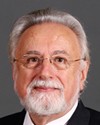Thank you.
Thank you again to our witnesses for your participation today. I hope you found it as helpful and as useful as we found it to be.
I'm going to ask the committee if they would bear with us for one minute while our witnesses pack up. I have three quick topics I want to go over.
One is on Mexico, and I want to comment on that because I'm not sure everybody was here. We have a request from a group of parliamentarians from Mexico. We are going to follow it up with an invitation from the committee to appear here, and we'll also take them to dinner. I expect there will be about half a dozen of them. I think we'll manage quite well, and we'll have some Spanish translation as well for those who require it. We'll report back. The clerk will consult with them, and we'll get you dates and times.
The next one is on logistics. I want to comment on the distribution of materials that our witnesses provide. We try to get them in advance. We've been reasonably successful in having the witnesses provide us with material in both languages, particularly on short notice. More recently, we have been trying to get them to you more quickly by sending them online through e-mail, and it seems to be reasonably efficient.
I want to again ask you all to designate someone on your staff to watch for this stuff, because we sometimes find that some members get it and others don't get it. I can assure you that it is sent to everybody. I want to remind you to check on it, because it makes it easy for everybody. But if you don't get something, please let me know.
The other thing I found very effective is when some of the witnesses come with their decks in colour, particularly when there are charts, graphs, and stuff. When we e-mail them to you, if you don't have colour printers in your offices—and I don't think very many of us have them—you don't get the full benefit of the charts and graphs. I'm going to ask the clerk if he can look into that somehow.
If we have coloured charts or graphs particularly, we don't have to print the whole deck. We could tell the witnesses to bring them. It's easier for us to follow the charts if they are in colour and not in black and white. Maybe you could suggest that the witnesses bring some extra copies in colour when they come. We can have an advance look at them when we get them by e-mail and when we're doing our homework. But when we look at them and follow them as they're making their presentations, it's nice to be able to follow them as they were distributed to us.
If anybody has any further comments on that, please direct them to me or to the clerk. It's coming along.
Last, I want to give Todd a few minutes to talk about Labrador and to bring you up to speed. I think we did it at the last meeting.
We're leaving at 7:30 in the morning from Ottawa, and we hope to get back by 4:30 in the afternoon. One of the restraints on our time to try to maintain the cost is to take a charter flight there and back. There is a limit on the pilots' time to be up and back and forth, and we can't extend it too much longer than that.
At this point, we are only including the visit to Churchill Falls, the plant, and a briefing from Newfoundland and Labrador Hydro. We'll get a full itinerary next week. We're still putting it together. The logistics are not particularly easy in a remote area, as Todd will tell you
But he has another request, so I'll turn it over to him.




